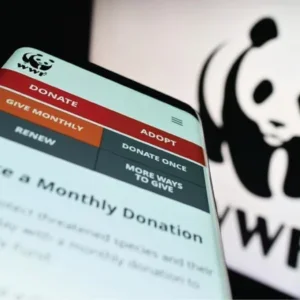The problems of hide collection in Africa have been documented in a number of articles in leather.
One of the best methods to increase the collection is to educate the local population in the ways of preservation and tanning. Unfortunately, the quality of education in many African countries is limited to the very good work carried out by organisations such as Unido. There is very little formal education.
However, the department for international development (DFID) at the foreign office in the UK was approached by the ministry of trade and industry in Ethiopia to offer aid in the form of setting up an institute for education in or near Addis Ababa. Dr Roy was invited to go.
The aim of this aid stems from the problems Ethiopia has with converting their undoubted rich source of raw material into wet-blue for value added sales or even preserving the stock suitable for export as dried skins. Traditionally the sale of raw material, wet-blue and leathergoods has been Ethiopia’s second largest export after coffee. However, recently this has fallen to third place behind oils and fats, so it was obvious that the potential was not being met or exploited. The collection of raw material is still patchy and this potential needs to be exploited if the Ethiopian economy is to benefit from the resource.
There have been problems with the quality of the raw material produced in recent years, especially with infestation from ticks and other parasites. The second problem that has occurred is the lack of qualified and competent indigenous personnel to oversee any potential increase in quality. Thus, it was that the British and Italian governments responded to a plea for help. The Italians were asked to provide equipment for a new leather and footwear institute, while the UK government was asked to send an expert to assess the educational needs of the industry and then the nature of the new institute.
DFID contacted Dr Roy at BSLT and asked him to travel to Ethiopia to meet with officials from the Ethiopian government and discuss the setting up of an educational facility for the industry. The building in which the new institute is to be established is at Kaliti. The building was an old food research institute and in a state of decay. The advantages were that it is large enough to house a model tannery and shoe factory. There will be laboratories and classrooms.
The proposal is that the institute will train students to higher diploma level; equivalent to the second year of a degree in leather technology at the Leathersellers’ Centre, and they will then be able to complete their degree by joining the second year of the course in Northampton. The students of the institute will also make use of the facilities at the near by university of Addis Ababa for their basic science training, while the staff will initially be trained to MSc level at the BSLT, which will be coupled with teacher training.
The report from Dr Roy says that implementing such an institute would be good for the country. There would be an increase in raw material quality, reaching both the domestic market and, more importantly, the export market. It would also encourage personnel who in turn could take the message of hide collection and simple preservation back to outlying centres. This would increase the number of hides reaching the market place.
There is also a need to increase the number of well-educated leather technologists and technicians in the tanneries of Ethiopia to ensure world class standards of production and quality. The facility could become commercially viable after three years, if it were fee paying. The ultimate aim might be to become the centre for excellence for East Africa. Such an academy already exists to train airline pilots from the East African region and Ethiopian Airlines has one of the better reputations in the region because of it. The objective would be to train leather technologists for the top jobs in the industry rather than those in charge being accountants.
A problem arose when it was suggested that the model tannery should move into production and sell the leather they make. Obviously, the Ethiopian Tanners’ Association were not pleased with this idea as their members would, in effect, be competing with the facility while sending their staff there for training. They, the Tanners’ Association, want to see a high class facility with the local Ethiopian population put forward to be trained and educated so that the tanning industry they represent can compete on the world stage.
The export market is seen as increasingly important to the survival of the leather industry in Ethiopia. This was borne out by the trip that the Tanners’ Association chairman Alem Asfaw made with a high powered delegation to China.
During the year that has passed since the report, there has been delay due to the Ethiopia/Eritrea conflict. However, some progress has been made in that the building has been refurbished, a director, Dr Giyachew Alemayelu has been appointed, and the tannery machinery contract with Italy is out to tender.
But, development of the academic programme and training of the trainers, which BSLT have offered, is presently not taking place due to an absence of funding.






